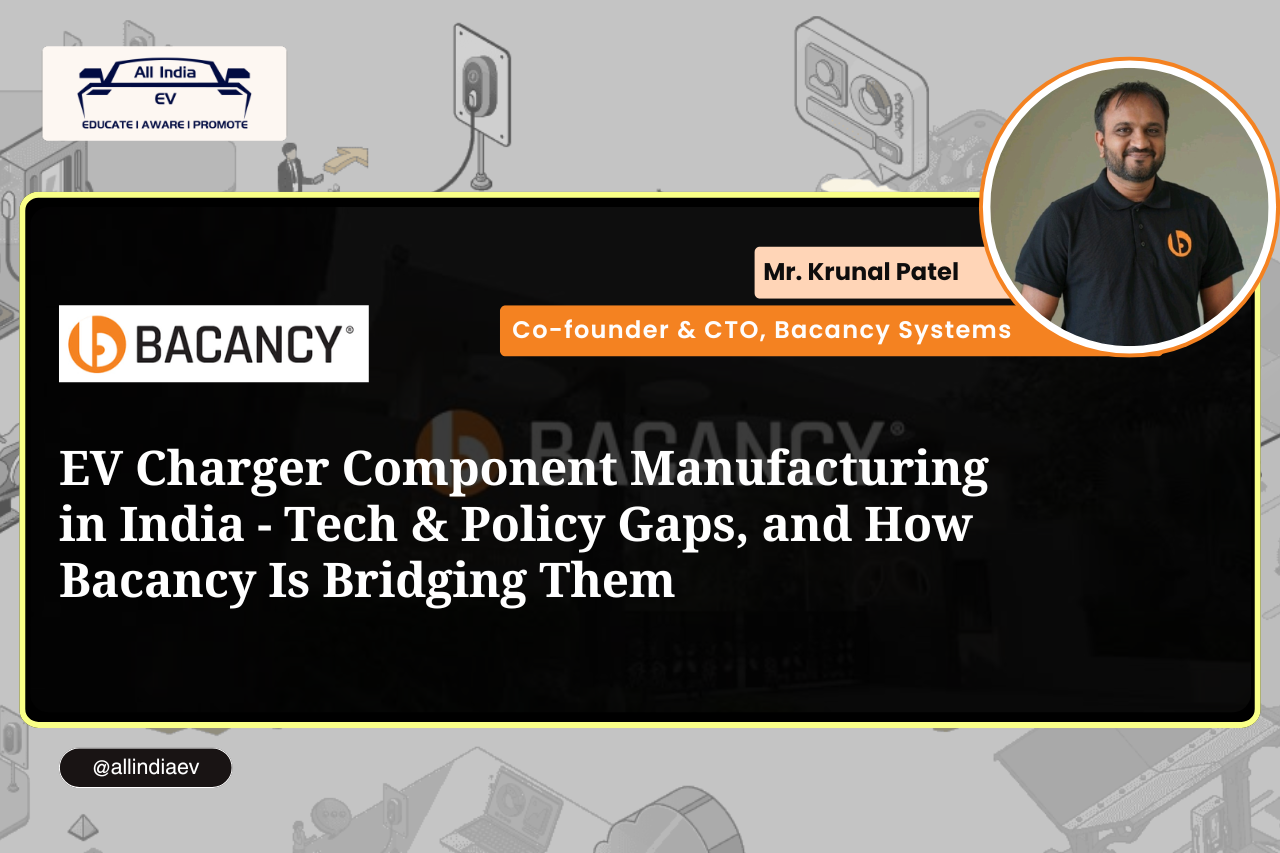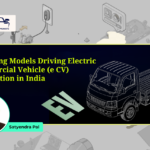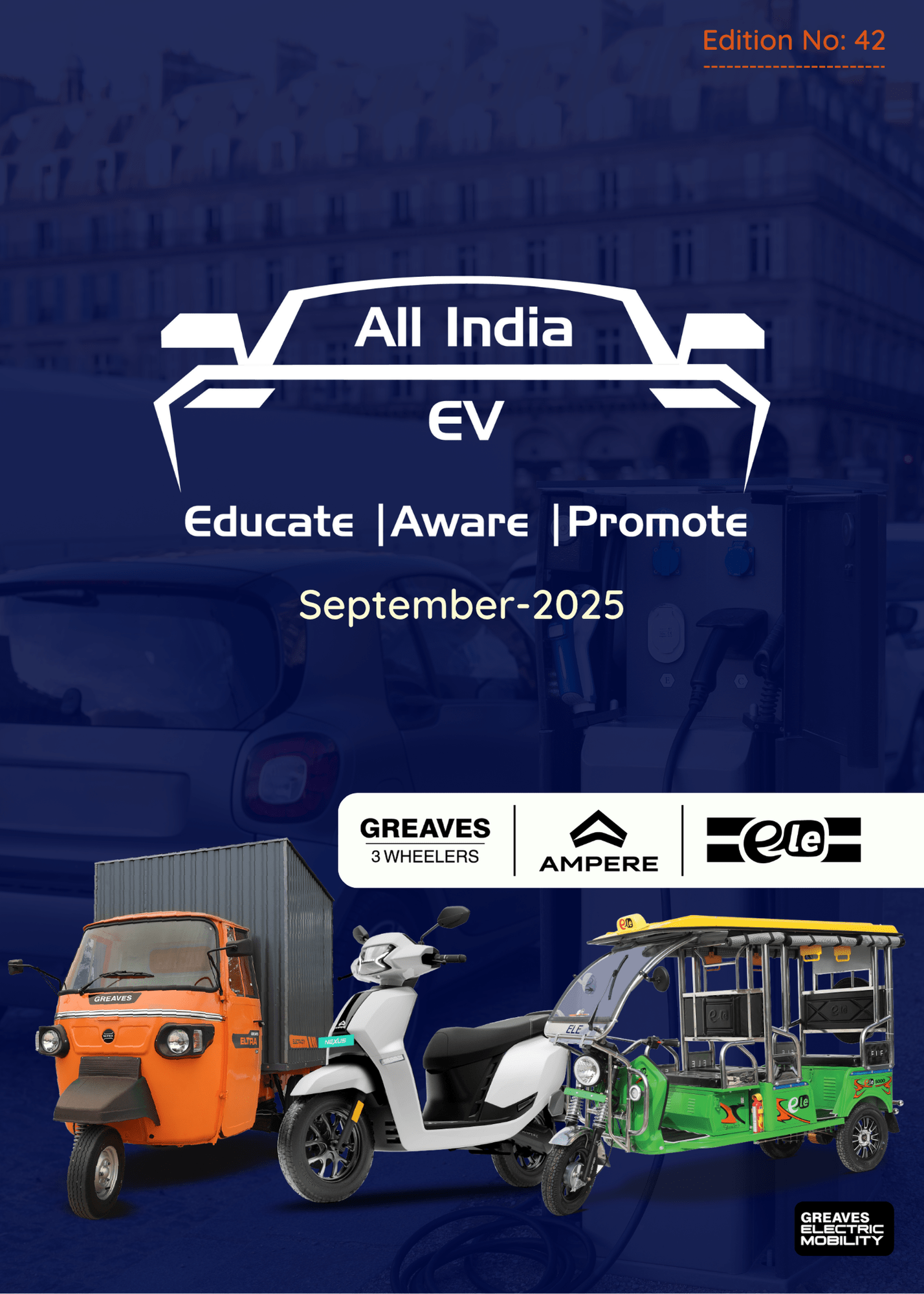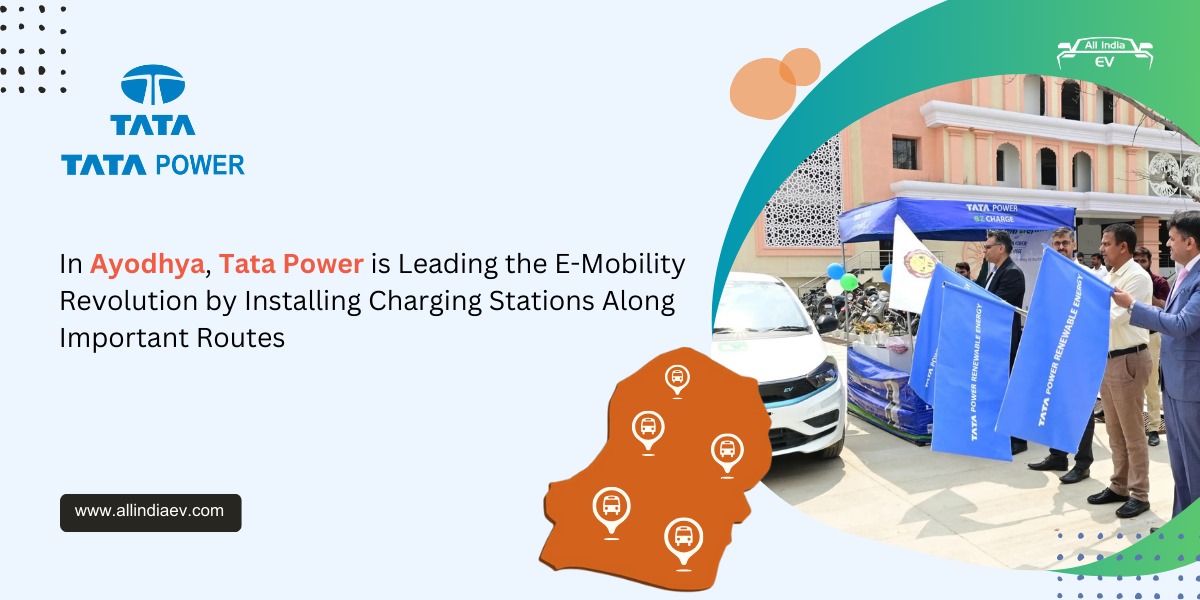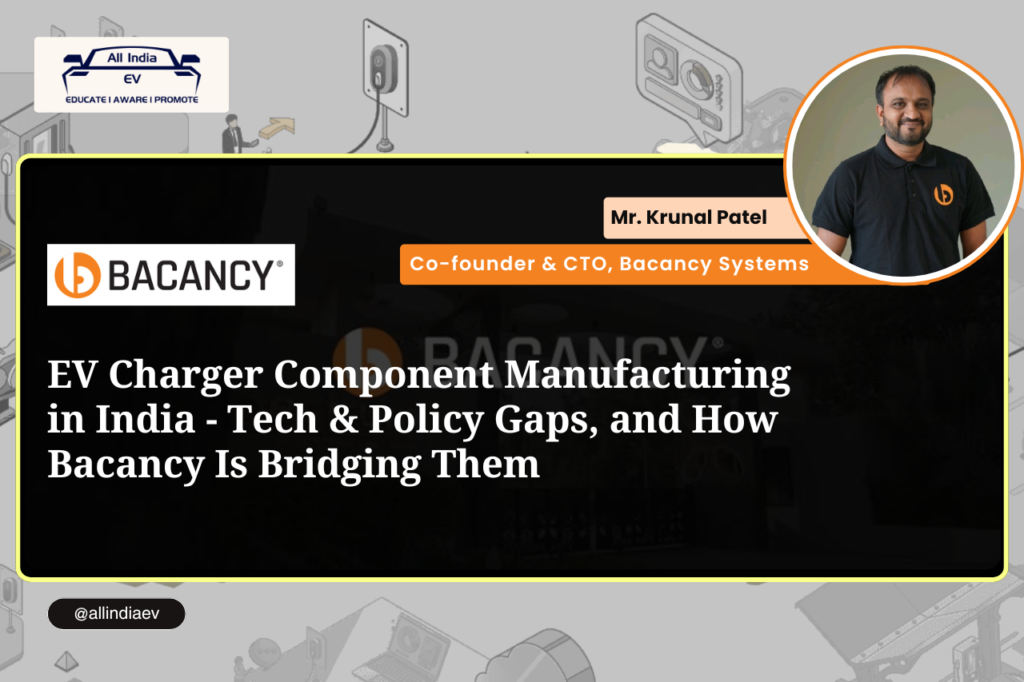
Bacancy is developing core components including power converters, control boards, and communication modules using local supply chains and high-grade engineering.
Recent global shifts, like China tightening exports of rare-earth magnets, have thrown a spotlight on the fragile nature of EV charger component supply chains.
In India, where EV charging infrastructure is critical to the clean mobility mission, an over-reliance on imports may hinder progress and escalate costs.
Let’s have a looks at the vulnerabilities in the current supply chain, India’s efforts to build local manufacturing, and how Bacancy is playing its part to bridge the gaps.
The Challenge: Supply Chain Vulnerabilities in EV Charger Component Manufacturing
EV chargers rely on several critical parts power units, rectifiers, control boards, communication modules, and rare-earth magnets, among others.
At present, India remains significantly dependent on imports for several of these components, particularly rare-earth materials, which are primarily sourced from China When China imposed export restrictions recently, prices surged and supply became unpredictable, creating risks for India’s EV rollout and auto sector growth.
At the same time, India’s domestic manufacturing is still growing faced with challenges like limited scale, technology gaps, and infrastructure hurdles.
Critical Components and Import Dependence
EV chargers rely on a combination of complex components, including power modules, rectifiers, control boards, onboard communication units, insulation monitoring devices (IMDs), and cooling systems.
Each component plays a crucial role in ensuring safe, efficient, and compliant charging for a wide range of electric vehicles.
EV chargers rely on:
- Rare‑earth magnets especially NdFeB for motors and power units.
- Power electronics (rectifiers, inverters, control boards).
- Communication modules require specialized semiconductors.
India remains heavily dependent on imports, especially from China, which processes over 90% of global rare-earth magnets.
Import Bottlenecks and Disruption
China’s April 2025 licensing rules now require rare, earth magnet exports to include detailed end-use certificates vetted by both countries, delaying shipments by 30–45 days.
This delay has already begun to impact EV and automotive production.
Manufacturers like Tata Motors and MG Motor have expressed concerns over potential supply chain slowdowns due to sourcing challenges for key EV charger components. Certain models equipped with advanced onboard chargers and smart communication modules may face production halts by June–July 2025.
Domestic Manufacturing Gaps
Despite India holding around 6.9 million tonnes of rare-earth reserves, it processes only around 10,000 tonnes compared to China’s 200,000 tonnes due to limited refining infrastructure.
Moreover, production of advanced electronics and power units remains hampered by weak local supply chains and limited scale.
Policy Momentum
To build local capabilities, the Indian government launched a PLI scheme in 2024 aimed at EV manufacturers investing in component production, offering support worth up to 50% over two years
Additionally, strategic initiatives like KABIL are seeking to secure mineral assets and scale domestic refining.
The Way Forward: India’s Push to Localize and Bacancy’s Role
The government has recognized these challenges and launched schemes like the Production Linked Incentive (PLI) to encourage local manufacturing of EV components. Investments are flowing in, and new manufacturing hubs are emerging.
Bacancy is working to develop key components like power units, control boards, and communication modules right here in India. By focusing on quality, advanced technology, and leveraging local suppliers, we aims to reduce reliance on imports especially rare-earth materials.
We are also collaborates with research institutions and policymakers to stay aligned with India’s vision for EV infrastructure. Through these efforts, Bacancy is helping build a stronger, more reliable EV charger ecosystem supporting the “Make in India” drive and helping the industry navigate uncertain global supply chains
Bacancy’s Capabilities
Bacancy is developing core components including power converters, control boards, and communication modules using local supply chains and high-grade engineering.
Bacancy has:
- Innovated designs to reduce reliance on heavy rare-earth magnets by exploring alternate motor architectures.
- Partnered with Indian R&D institutions to enhance manufacturing quality and meet global standards.
- Established assembly lines, yielding localized production capacity at scale.
By replacing imported parts with Bacancy‑made units, delivery timelines have improved, and costs dropped in pilot EV charger projects.
These efforts boost domestic value-addition, qualifying for PLI incentives, strengthen supply stability, and reinforce national “Atmanirbharta” in clean mobility tech.
With global supply uncertainties showing no sign of easing, accelerating localization of EV charger components is urgent.
Policymakers can help by strengthening support and addressing bottlenecks in scaling production. Industry players and investors should back homegrown innovators like Bacancy to secure India’s path toward a self-reliant EV future.
Bacancy is ready to be a trusted partner in this journey, committed to powering India’s clean mobility ambitions.
What’s needed:
- Policymakers should fast-track licensing processes, expand PLI reach to critical sub- components, and support domestic refining and rare-earth recycling.
- Industry stakeholders and investors should back firms like Bacancy that prioritize supply-chain resilience and tech excellence.
Bacancy stands ready leveraging local production, innovative design, and strategic partnerships to continue bridging gaps and power India’s EV future.


